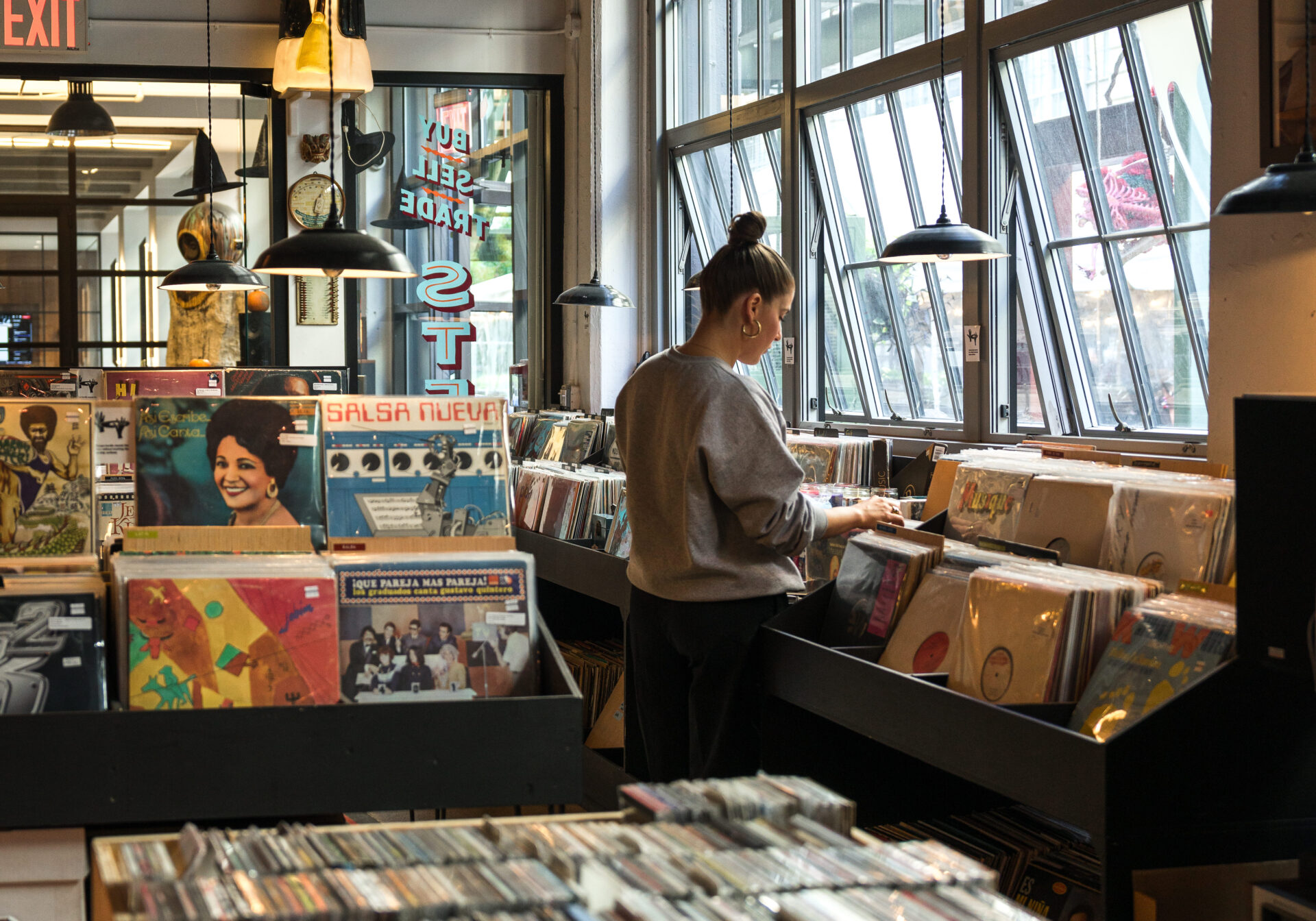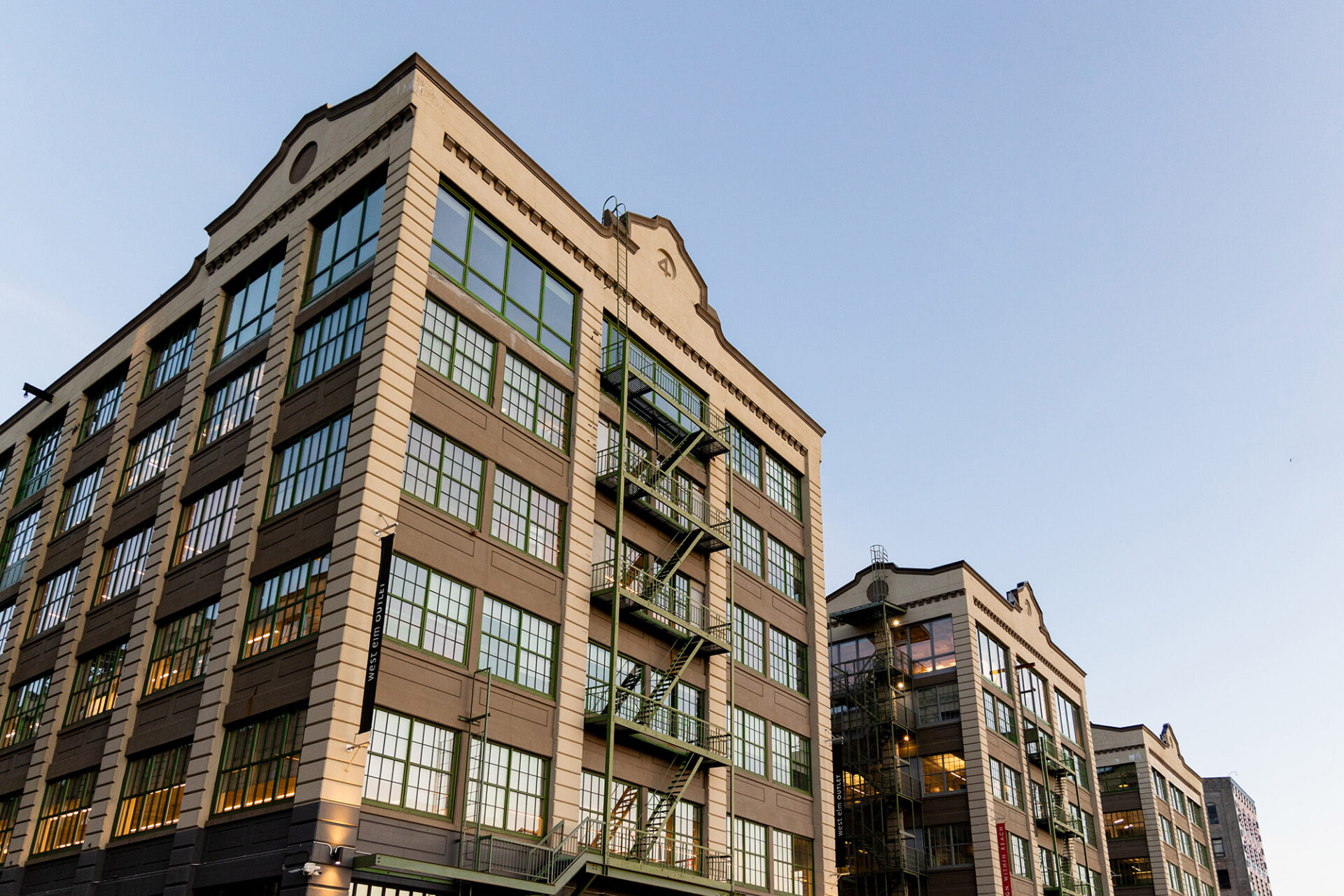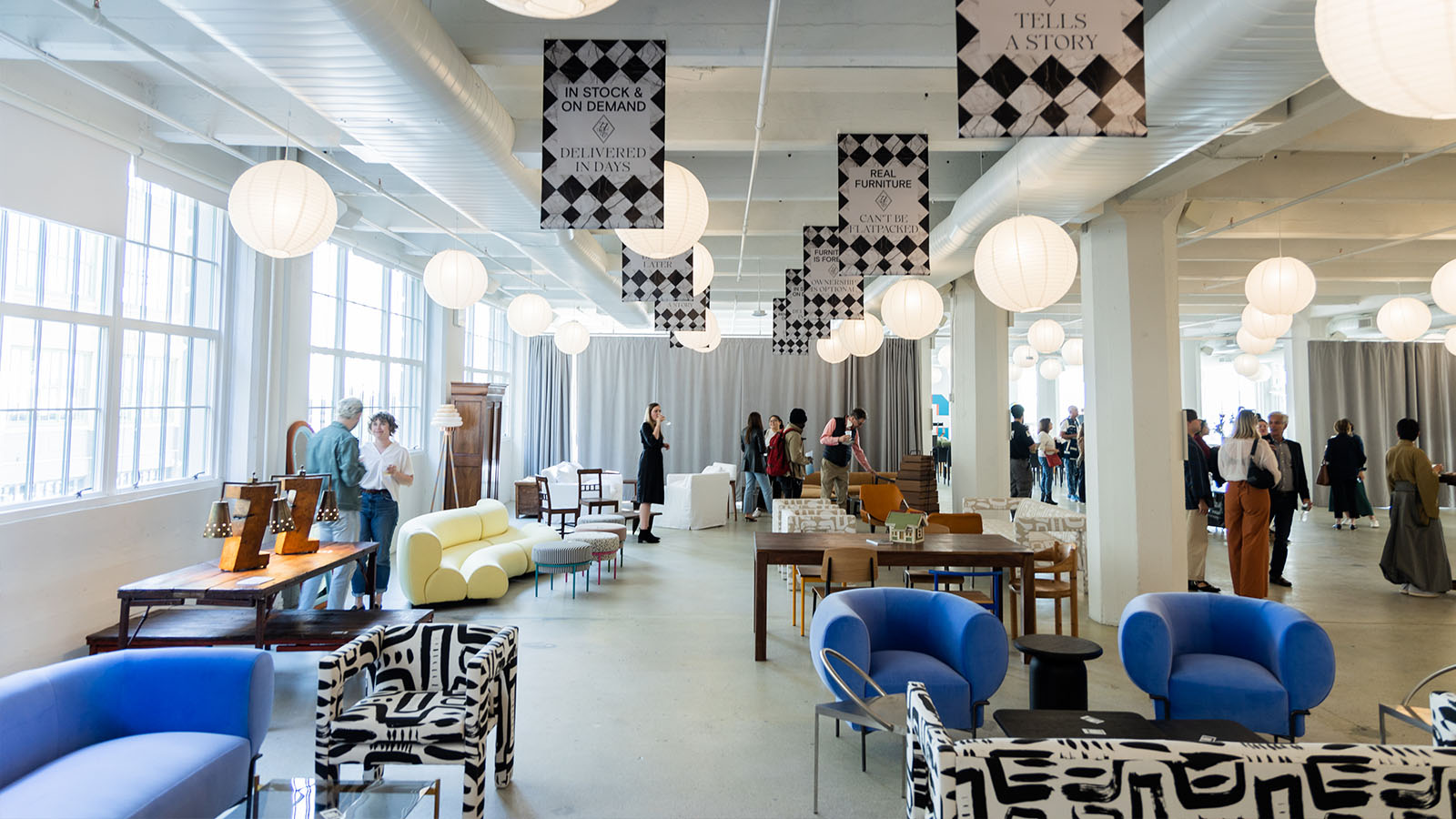Coworking has a new playbook in wake of WeWork bankruptcy


WeWork’s early November bankruptcy filing sparked a multitude of questions about the future of the coworking sector, particularly given how synonymous the once high-flying firm has become with the industry.
It was just the latest sign that many of the highest-profile coworking firms of the past decade are now in a greatly diminished place compared to their earlier days, when they seemed poised to transform the staid world of commercial real estate. WeWork’s travails have been well documented at this point by everyone from business reporters to Hollywood A-listers. Its erstwhile rival Knotel, meanwhile, declared bankruptcy in early 2021 and has since become a seldom-discussed part of Newmark’s vast portfolio. And The Wing, a trendy coworking firm designed specifically for women, closed its final locations in 2022 following years of tumult.
“If there were a great deal of demand within those coworking spaces,” Empire State Realty Trust CEO Tony Malkin said on his firm’s latest earnings call, “those companies would not go out of business.”
Still, savvy landlords aren’t sleeping on the opportunity behind the fizzled coworking hype, particularly in a post-Covid office environment that has placed more importance on hybrid work and flexibility. Lower-key coworking firms such as Industrious and Quest Workspaces are still looking to expand, and several of the city’s major landlords are choosing to launch coworking-style options of their own.
“It gives them their true individuality as a brand and as a company with the security and stabilization of knowing that they are doing business with a landlord,” the Durst Organization’s Lauren Ferrentino said of DurstReady, the firm’s in-house flexible office space program, “not a flex operator that is in flux for whether or not they’ll be there tomorrow.”
In other words, though the flexible office market may not lead to the widespread changes predicted during the heady 2010s, it is not going anywhere. And any landlord looking to survive in the bleakest commercial real estate market the city has seen in decades will need to determine how the option fits into its portfolio sooner rather than later.
“I can’t imagine how any owner at this point in time isn’t thinking about this,” said Quest CEO Laura Kozelouzek. “Because if you’re not, it’s almost like putting your head in the sand.”
Do it yourself
The Spiral in Hudson Yards is one of the more recent developments from New York real estate giant Tishman Speyer. The project was designed by superstar architect Bjarke Ingels and has inked massive headline-grabbing leases from tenants including drugmaker Pfizer (800,000 square feet), the law firm Debevoise & Plimpton (530,000 square feet) and major bank HSBC (265,000 square feet).
The building is also home to two floors of Studio, Tishman Speyer’s in-house coworking option, which it launched shortly before the pandemic began. Those floors can feel more reminiscent of a hotel’s business center than a traditional office, with amenities including conference rooms, lounges and La Colombe coffee.
Although demand for Studio suffered with the arrival of Covid, it has since come back with a vengeance, according to Tishman Speyer’s Nate Pinsley, who runs the program.
“It was a challenge to attract people. We certainly did not plan that when we launched in 2018,” he said. “But since the pandemic, we have seen a huge resurgence over and above what our prepandemic levels of demand were.”
Most of the Studio locations now have a waitlist, and the newest option, at 666 Third Ave. near Grand Central, also leased up the fastest, Pinsley said.
Industry City has an in-house coworking option as well, called Camp David, at its Sunset Park campus. There are multiple space options within it, and running the program internally makes it easier to figure out which one will work best for which tenant, said Jeff Fein, senior vice president of leasing.
“I think it’s a very big differentiator to be the operator and the landlord at the same time,” he said, describing Camp David as a combination of Soho House and WeWork. “If there’s an operator, a third party in between us, they can’t discuss our creative workshop options with them. They can’t do an analysis of what makes more sense.”
Durst has been a longtime skeptic of the independent coworking business model, Ferrentino said, and launched DurstReady in 2019. Firms have leased about 500,000 square feet of space in the program since it launched in 2019, and it is available at some of Durst’s more prominent buildings such as 1 World Trade Center and 1133 Sixth Ave. She predicted companies leasing flexible office space directly from a landlord would become a more popular option going forward.
“Tenants have zero faith in what used to be and are now migrating toward landlords and the strength of landlords to provide them the same service,” she said. “I don’t understand why other landlords haven’t promoted their success. Maybe they’re not successful.”
Farm it out
Landlords being able to do what independent coworking firms were offering had always been a risk for the sector, said Stijn Van Nieuwerburgh, a professor at Columbia Business School.
“Any sophisticated landlord that owns office buildings can essentially emulate what WeWork was doing at a fairly low cost,” he said. “If you’re Tishman Speyer or Related or Vornado, nothing stops you from converting some of your office space into, essentially, a WeWork.”
But even now, not all of them have opted for that model. Vornado’s Penn 1 includes coworking space, for instance, but it is run by Industrious, a longtime player in the city’s flexible office market. The suites were busy with companies and workers on a recent midweek afternoon this fall and included virtually all of the amenities that have become synonymous with coworking in recent years: complimentary snacks, lounge areas, outdoor spaces and the like.
Industrious has its own locations as well, and the firm hopes to increase its presence in the city going forward, noted Senior Director of Real Estate Doug Feinberg. He added that the company is not particularly concerned about more competition from landlords deciding to launch in-house flexible office space programs given the amount of resources it takes to do that.
“There are only a very limited subset of them who are capitalized enough to build out their own platform,” he said, “and even some of those groups are saying, ‘This is a really operationally intensive business. I’d rather partner with a third party.’”
Quest is similarly looking at additional opportunities in New York, but Kozelouzek acknowledged that the city’s office market is extremely volatile right now. In Florida, where the firm has multiple locations, the uncertain office market has been offset by an influx of new arrivals, but this has not been the case as much in New York, she said.
Kozelouzek has been in the coworking industry for more than 30 years and has seen plenty of economic upturns and downturns over that time. However, this moment in particular feels unprecedented to her.
“There was a pattern coming out of recessions, and there were patterns following tough times,” she said. “This time around, there are too many variables at play. It’s hard to predict.”
Location, location, location
Many aspects of the post-Covid office market seem like they should be making coworking only more popular. In an era when employers are still extending flexible attendance policies, inking a deal for a relatively small and affordable office space where workers can meet up at their leisure would appear to be a near-perfect solution.
But the reality hasn’t been that straightforward, and the longtime bane of workers’ existence — commuting — remains a big reason why.
“Where we have coworking spaces isn’t necessarily where New Yorkers want them,” said Eli Dvorkin, editorial and policy director at the think tank Center for an Urban Future. “There are a lot of folks that don’t want to be home every day. They just want an option that isn’t an hour-long ride from where they live.”
A 2021 report from the organization found that the vast majority of coworking spaces were in the city’s major office districts, namely Midtown and Lower Manhattan. Although a few were sprinkled throughout the outer boroughs, in 60% of the city, the only coworking-style option was a library, according to the report.
Industrious is already taking a close look at this, Feinberg says. The bulk of its current New York locations are in the city’s central business districts, but the firm does have a Williamsburg location slated to open in the spring and sees these types of locations as key going forward, he said.
“With hybrid work, distributed workforces and work from anywhere, folks are looking for places that are shorter commutes,” he said. “We’re seeing larger companies saying, ‘Let’s use the city as a network.’ We want to bring those locations closer to where people are residing.”
In some cases, this might mean developing more coworking options outside of the city entirely. Some flexible office space locations in the suburbs have already proved to be a bright spot for commercial landlords, said Michael Cohen, president of the tristate region for the brokerage Colliers.
“The office suite operators are finding that some of the suburban locations that are near transportation hubs are outperforming their expectations,” he said, “because it’s not quite work from home, but it’s not quite schlep on the train into the city for an hour and a half back and forth every day.”
Back to basics
Cohen was blunt about which types of coworking sites will and won’t do well in the current market: large spaces are in trouble, while small ones that leave a landlord or coworking firm less dependent on one company for rent are better off.
“The enterprise model of coworking has failed,” he said. “The model everybody seems to want to pursue these days is the office-suite model.”
And some of those larger spaces, particularly the ones WeWork is aiming to leave now that it has filed for bankruptcy protection, will likely end up being used in the traditional way: companies will sign a standard lease for them with an office owner.
“A lot of landlords are saying, ‘We think these spaces will appeal to conventional tenants,’” said Cohen. “’Thank you very much, WeWork, for putting your infrastructure in place. Sorry you couldn’t make a go of it, but now it’s our turn.’”
Of course, the market for traditional office leases is not exactly booming right now. The city has been facing a massive supply-and-demand imbalance for office space since the start of the pandemic, and smaller companies in particular are likely not going back to signing leases in which the landlord just gives them the space and checks out, Van Nieuwerburgh said. Part of coworking’s appeal was the additional services the providers would offer, and amenities will play a much bigger role in virtually all types of office leases moving forward.
“The days where we’re going to be signing 10-year leases for small companies are over,” he said. “We’re moving quickly toward a future where the landlord is much more actively involved in managing the tenant, and that’s in some sense a part of the DNA of coworking spaces–not just offering a more flexible contract, but also providing programming and other auxiliary services.”
–
Read the article from Crain’s New York Business here.
Learn more about leasing office space at IC here.







